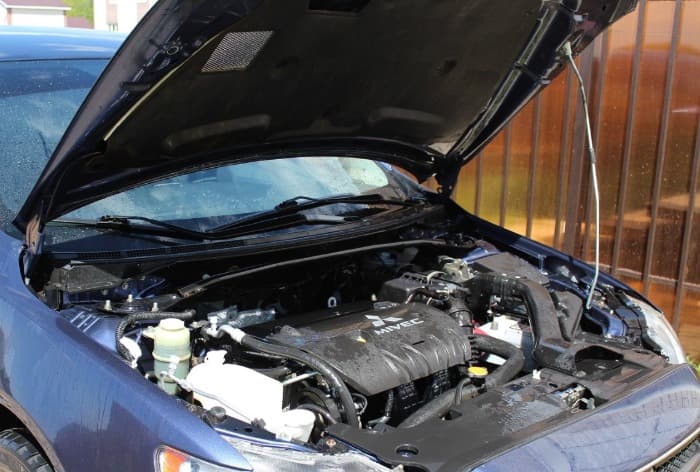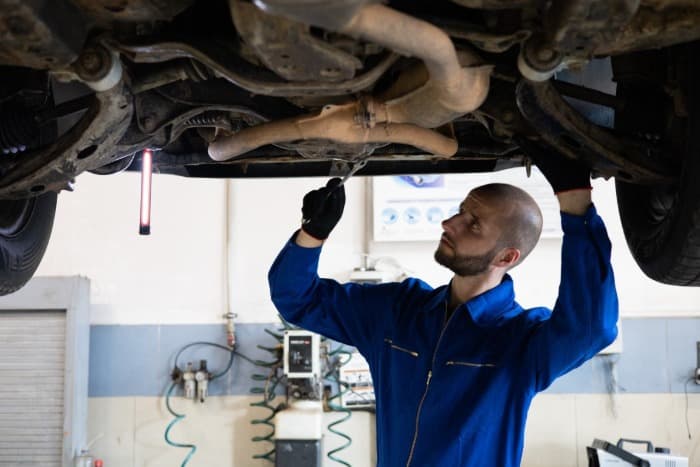Table of Contents
- Introduction to car coolant reservoirs
- What does the coolant reservoir do?
- Common issues with the coolant reservoir
- The danger of Overfilling or Underfilling your coolant reservoir
- Maintenance: How to Check and Replace your reservoir
- Conclusion
Home » What’s a car coolant reservoir and what does it do in the car?
Introduction to car coolant reservoirs
The coolant reservoir is an important component of a car’s cooling system, and it serves a number of important functions. We will go over as many aspects of the coolant reservoir as we can. It isn’t a super exciting part in the car but it is pretty important to a couple of things.
So if you are having issues related to coolants, it might be something you should learn about as we go over a couple of ways to keep the reservoir in good working shape and what you can do if yours is giving you issues. Don’t worry if your car’s coolant is bubbling or overflowing, as we will go over some things that you might be able to do to fix them.
What does the coolant reservoir do?
The main function of the coolant reservoir is to store excess coolant that is not being used by the engine. When the engine is running, the coolant circulates through the engine and absorbs heat, which it then dissipates through the radiator.
But there are times when the engine is not producing as much heat, such as when the car is idling or driving at low speeds. During these times, the coolant is not being used, and it can accumulate in the reservoir. The coolant reservoir acts as a holding tank for this excess coolant, ensuring it’s ready to be used when needed.
In addition to storing excess coolant, the coolant reservoir also helps to maintain the correct level of coolant in the system. As the coolant circulates through the engine and radiator, it can evaporate or leak out, decreasing the overall coolant level in the system. The coolant reservoir is designed to refill the system as needed, ensuring that the correct coolant level is always present.
Common issues with the coolant reservoir
A few issues can arise with the coolant reservoir, and it is important to be aware of these potential problems to keep your car running smoothly. One common issue is a leak in the reservoir itself. If the reservoir is leaking, it can decrease the overall level of coolant in the system, which can cause the engine to overheat. Another issue that can arise is a faulty cap on the reservoir.
The cap is responsible for maintaining the correct level of pressure in the system, and if it is not functioning properly, it can cause the coolant to boil or leak out.
To ensure that the coolant reservoir is functioning properly, it is important to perform regular inspections and maintenance. This can include checking the coolant level in the reservoir, looking for any signs of leaks or damage, and replacing the cap if necessary.
Possible Leaks and Clogs in the coolant reservoir
Possible Leaks and Clogs are two of the most common causes of car coolant reservoir issues. The car coolant reservoir is integral to a vehicle’s cooling system. It stores the radiator fluid, which helps to regulate engine temperature.

If this component is not functioning properly, it could lead to expensive repairs or breakdowns down the road. Therefore, it’s important to be aware of potential leaks and clogs that can happen in your car’s coolant reservoir so you can take preventative measures before they become more serious problems.
The danger of Overfilling or Underfilling your coolant reservoir
When it comes to keeping your car running smoothly, the car coolant reservoir plays an important role. The coolant reservoir holds extra coolant for your vehicle’s cooling system. It is a vital component that helps ensure the engine maintains its proper temperature while avoiding overheating and potential damage. However, if you overfill or underfill the reservoir, you may find yourself with serious engine problems on your hands.
The consequences of overfilling the reservoir can be pretty bad. An excess of fluid can cause pressure to build in the radiator, leading to a possible bursting of hoses or even a warped cylinder head gasket. Overheating coolant may also occur due to insufficient air circulation caused by too much liquid inside the system.
Maintenance: How to Check and Replace your reservoir
First, you will want to locate the reservoir. It can usually be found near the radiator or firewall of your vehicle, depending on its make and model. Once you have located it, press lightly on its sides with both hands; if it feels soft or gives way easily, there might be an issue that needs attention. You should also check under its cap for any signs of rust or debris as these may indicate a problem with fluid leakage from the system.
Conclusion
Overall, as you can see, the coolant reservoir is an essential component of a car’s cooling system. It plays a pretty important role in maintaining the correct coolant level and preventing the engine from overheating. By understanding the function and importance of the coolant reservoir and performing regular inspections and maintenance, you can help ensure that your car is running smoothly and efficiently.
This is just like the other parts of your car, as it might not be a super sexy thing to check on, but it can save you headaches and money by keeping up with your regular maintenance. If you can prevent a breakdown by noticing a low coolant level, you will be much better off then an overheated engine.
Can I just refill my coolant reservoir?
You can refill your coolant reservoir, but it is important to follow the correct procedure and use the correct type and amount of coolant.
Can I drive with an empty coolant reservoir?
No, your car will not be able to cool down, so you shouldn’t drive without car coolant. If the coolant level is low, it is important to refill the reservoir as soon as possible.
What is the coolant reservoir tank for?
The coolant reservoir tank is used to store excess coolant that is not being used by the engine.
Why is the coolant reservoir empty?
The coolant reservoir may be empty for various reasons, such as a leak in the system, evaporation, or improper maintenance.
Is it OK to mix old and new coolants?
Mixing old and new coolants is not generally recommended, as different types of coolants can have incompatible chemical formulations. So try to keep using the same one if possible.
How long does coolant last in a car?
The lifespan of coolant can vary depending on the type and the specific conditions of use. Some coolants are designed to last for several years or even up to 100,000 miles, while others may need to be replaced more frequently.
What are the signs of low coolant?
Common signs of low coolant can include a low coolant warning light on the dashboard, a temperature gauge reading higher than normal, or steam coming from under the hood. It is important to address low coolant levels as soon as possible, as overheating can cause serious damage to the engine.
Should I put coolant in my radiator or reservoir?
Coolant should generally be added to the radiator, as the radiator is responsible for dissipating heat from the engine. The coolant reservoir stores excess coolant and refills the system as needed.
What happens if the coolant is low?
If the coolant level is low, the engine may not be able to dissipate heat effectively, which can cause it to overheat.
How often should I refill my coolant reservoir?
Generally, checking the coolant level regularly and refilling the reservoir as needed is a good idea.


